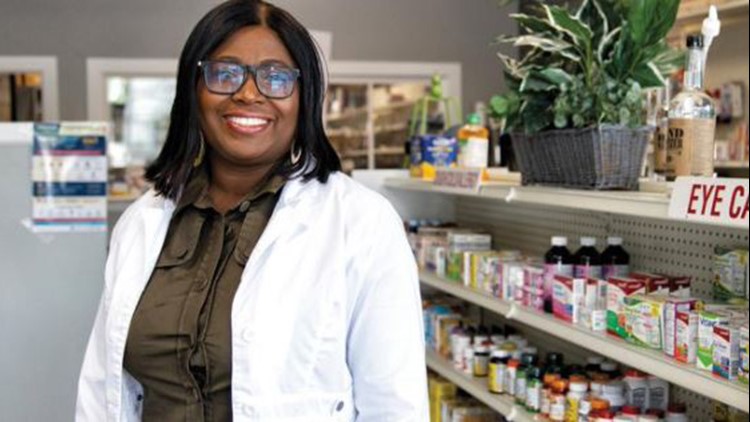ST. LOUIS — Rebecca Mawuenyega, a 50-year-old pharmacist from Ghana, came to the United States in the early 2000s, when there was a shortage of pharmacists and licenses transferred easily.
After several years of working for pharmacies and at St. Louis Children's Hospital, she dreamed of buying the Dellwood Pharmacy, located in a largely Black neighborhood in north St. Louis.
"Everybody I talked to thought I would get a loan easily because I am a minority and a woman," she said. "I applied to three banks, but none of them would give me a loan."
The problem, she said, was that her recent income was too low to qualify for a conventional bank loan. She had spent the previous year doing lower-paid consulting work involving diabetes management education with a grant from the Missouri Pharmacy Association.
An accountant with whom she had worked told her about Justine Petersen Housing and Reinvestment Corp., a St. Louis nonprofit and certified Community Development Financial Institution (CDFI) that raises capital to increase minority entrepreneurial development and services.
Fifteen months ago, Mawuenyega received a $150,000 loan, enough to buy the pharmacy, through Justine Peteresen and the U.S. Small Business Administration's Community Advantage lending program.
Little-known but increasingly important sources of capital, CDFIs are growing in number and in dollar impact in St. Louis, supporting minority businesses and residents in low-income neighborhoods. Driving that trend is more attention to racial and wealth disparities, the recognition that minority businesses are neglected and the COVID-19 pandemic, which brought new attention to CDFIs through popular disaster loan programs.
And momentum is building. The available data show CDFIs invested more than $166 million in St. Louis last year — a 23% increase from 2019. And already this year, two new CDFIs have entered the market.
While the target audiences of these CDFIs may be different, they operate under a shared mission.
"We believe that the only way that we can move the St. Louis region forward, as well as the broader country, is that there have to be easier ways for organizations, for communities, for individuals to access capital,'" said Paul Woodruff, vice president of community development at St. Louis Community Credit Union, which operates a CDFI that belongs to the nine-member St. Louis CDFI Coalition. "That's why our individual organizations exist. That's why the coalition exists."
Click here for the full story.



